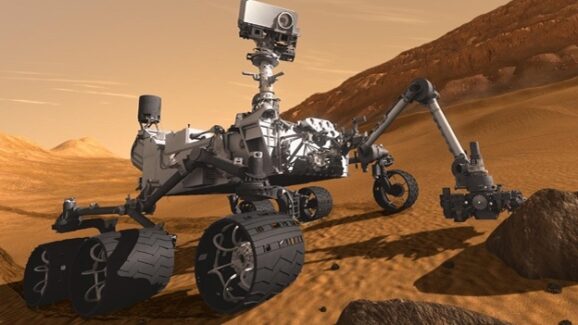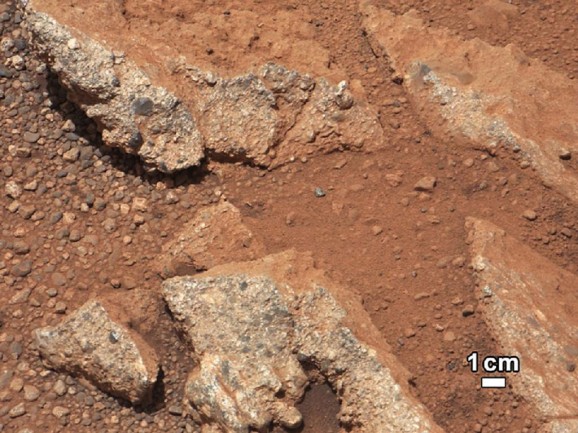Curious To See What Curiosity’s Been Up To? Watch This.
This article is more than 2 years old
The video about, entitled “Twelve Months in Two Minutes,” speed-chronicles Curiosity’s time on Mars over the past year. It’s like having a nanny cam for a Mars Rover.
Curiosity set down on Bradbury’s Landing (an auspicious beginning to any space mission) on Mars on August 6, 2012, traveling over 3,000 miles at over 11,500 miles per hour from an altitude of nearly 1,800 miles. The video below contains the full 20 minutes of Curiosity’s dramatic descent and landing from inside the control room. It gets pretty tense at points, as evidenced by the nail-biting, groaning, and sometimes pacing engineers. The cheering at the end is well-deserved and particularly cathartic.
As cool as that video is, this three-minute-long, ultra-high-definition video of Curiosity’s descent takes the cake. The end, in which the ground rushes up at the rover, is particularly stunning.
So, what has Curiosity done over the past year as it’s gone a-roving on Mars’ surface?
First and foremost, Curiosity achieved its primary goal — it gathered evidence to support the claim that the environment on Mars would once have been favorable for microbial life. Curiosity was able to drill into a rock to collect sample material to support this hypothesis.
It has amassed 190 gigabits of data, including 36,700 full images and as many thumbnails. It loosed over 75,000 laser shots (unless Curiosity is keeping its identity as an interstellar villain close to the vest, these shots helped determine what targets were made of), analyzed materials from rocks, investigated the three-mile-high Mount Sharp, and drove over a mile.

The investigation of Mount Sharp was of particular significance, as orbiters identified it as having been formed in a wet environment. Some of the mountain’s outcrops contained signs of ancient streams, the first pebble deposits studied on Mars. Scientists decided first to investigate closer outcrops, where the mission quickly found signs of vigorous, ancient stream flow. These were the first stream-bed pebble deposits ever examined up close on Mars, and they resembled ones found on Earth.

Curiosity has also helped pave the way for future Mars missions, particularly by measuring and monitoring radiation levels. Curiosity also found evidence that Mars’ atmosphere has changed dramatically over time through natural processes which have caused atmospheric loss. NASA’s next Mars mission, the MAVEN (Mars Atmosphere and Volatile Evolution) will focus on those atmospheric processes after its November launch. Funding notwithstanding, NASA administrator Charles Bolden believes that Curiosity’s findings could help increase the probability of sending humans to Mars: “Wheel tracks now will lead to boot prints later.”
All told, Curiosity has more than lived up to its name. The information it has gathered over the last year has provided us with answers, but with those answers come a new slew of questions, which is exactly how curiosity should work in space.











